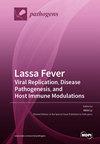在全球协调停用二价口服脊灰病毒疫苗(bOPV)之前提高人口免疫力
IF 3.3
3区 医学
Q2 MICROBIOLOGY
引用次数: 0
摘要
2022 年,全球脊髓灰质炎病毒模型显示,如果在 2027 年协调停止使用含 Sabin 株 1 型和 3 型的二价口服脊髓灰质炎病毒疫苗(bOPV),则可能会增加疫苗衍生的流行性脊髓灰质炎病毒(cVDPV),尤其是 1 型脊髓灰质炎病毒引起疫情爆发和预期麻痹病例的风险。该分析不包括使用 bOPV 实施有计划的预防性补充免疫活动 (pSIA),以便在停止使用 bOPV 之前实现并维持人群对 1 型和 3 型的较高免疫力。我们回顾了之前发表的 OPV 停用模型研究,以支持 bOPV 停用规划。我们应用了全球脊髓灰质炎病毒传播和 OPV 演变综合模型,并对假设进行了更新,以反映直至 2023 年底的流行病学、免疫接种和脊髓灰质炎根除计划。我们探讨了 2027 年停止 bOPV 和 2027 年之前不增加 bOPV pSIA 的影响。通过 bOPV pSIAs(即强化)提高人群对 1 型和 3 型的免疫力,可大幅降低 cVDPV 爆发的预期全球风险,并减少 bOPV 停止使用前后的预期脊髓灰质炎病例数。我们发现,在停用 bOPV 之前,有必要大幅提高 bOPV 的总体覆盖率,以实现成功停用 bOPV 的高概率。本文章由计算机程序翻译,如有差异,请以英文原文为准。
Increasing Population Immunity Prior to Globally-Coordinated Cessation of Bivalent Oral Poliovirus Vaccine (bOPV)
In 2022, global poliovirus modeling suggested that coordinated cessation of bivalent oral poliovirus vaccine (bOPV, containing Sabin-strain types 1 and 3) in 2027 would likely increase the risks of outbreaks and expected paralytic cases caused by circulating vaccine-derived polioviruses (cVDPVs), particularly type 1. The analysis did not include the implementation of planned, preventive supplemental immunization activities (pSIAs) with bOPV to achieve and maintain higher population immunity for types 1 and 3 prior to bOPV cessation. We reviewed prior published OPV cessation modeling studies to support bOPV cessation planning. We applied an integrated global poliovirus transmission and OPV evolution model after updating assumptions to reflect the epidemiology, immunization, and polio eradication plans through the end of 2023. We explored the effects of bOPV cessation in 2027 with and without additional bOPV pSIAs prior to 2027. Increasing population immunity for types 1 and 3 with bOPV pSIAs (i.e., intensification) could substantially reduce the expected global risks of experiencing cVDPV outbreaks and the number of expected polio cases both before and after bOPV cessation. We identified the need for substantial increases in overall bOPV coverage prior to bOPV cessation to achieve a high probability of successful bOPV cessation.
求助全文
通过发布文献求助,成功后即可免费获取论文全文。
去求助
来源期刊

Pathogens
Medicine-Immunology and Allergy
CiteScore
6.40
自引率
8.10%
发文量
1285
审稿时长
17.75 days
期刊介绍:
Pathogens (ISSN 2076-0817) publishes reviews, regular research papers and short notes on all aspects of pathogens and pathogen-host interactions. There is no restriction on the length of the papers. Our aim is to encourage scientists to publish their experimental and theoretical research in as much detail as possible. Full experimental and/or methodical details must be provided for research articles.
 求助内容:
求助内容: 应助结果提醒方式:
应助结果提醒方式:


